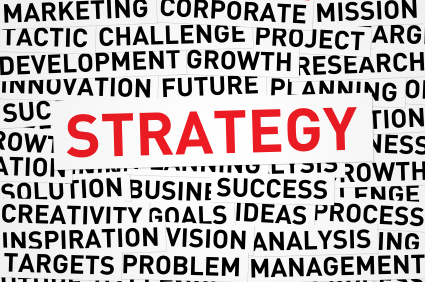Strategy vs. Tactic: Important Differences
I think everything we do in business needs to have a strategy behind it. I notice sometimes people struggle with the difference between strategy and tactic.
“Our strategy is to build up an email list through social media and webinars, then drive people to our webpages for web sales.”
Those are all tactics, not strategies. Here are other tactics:
- Brochure
- Coupons
- Ad
- Website
- Landing Page
- Sales letters
- Call
- Trade show
- Article
Someone asked the members of the The Strategic Planning LinkedIn group to define strategy in one sentence. There are 70 answers so far. At the risk of sounding pedantic, here’s a good definition of strategy:
A strategy is a long term plan of action designed to achieve a particular goal. (Wikipedia)
It’s what you want to achieve in the future, including how you want to be perceived in the marketplace (your positioning).
For everything you do in your business, you need to ask yourself what you want to accomplish.
From a high level, you want to define:
- What you want to accomplish long term?
- What or how you want your clients to think of you?
- What you need to do to accomplish that (tactical activities)?
Some companies do this and stop there. Most don’t even do that. To be truly strategic (and far more effective), however, there is still one more step.
You need to define the strategy for EACH TACTIC. For each tactic ask yourself what outcome you want to achieve:
- Be perceived as trustworthy
- Be perceived as an industry expert
- Increase brand loyalty
- Stop price shopping
- Get referrals
- Close the sale
Determining what you want to achieve (and hopefully, there will be more than one goal) will help you get more out of each tactic.
For every event, there’s a reaction and an outcome, usually in this sequence:
Event => Reaction => Outcome
What if we looked at each business event or action and instead of reacting to it, designed our actions according to the outcome we seek?
Event => Outcome => Reaction
Instead of reacting to competitors’ or customers’ demands, a business would first look at the outcome they search to create. Then decide what to do based on achieving that outcome. That would be more strategic, wouldn’t it?
Right now everyone’s jumping on the social media bandwagon – and most, with nary a thought for their long-term strategy. What if you thought first about the outcome you desire to achieve, then investigate how you can create that response using the tools that social sites offer you?
That might open up some new ideas that are aligned with your goals and strategy, no? Just a thought…










